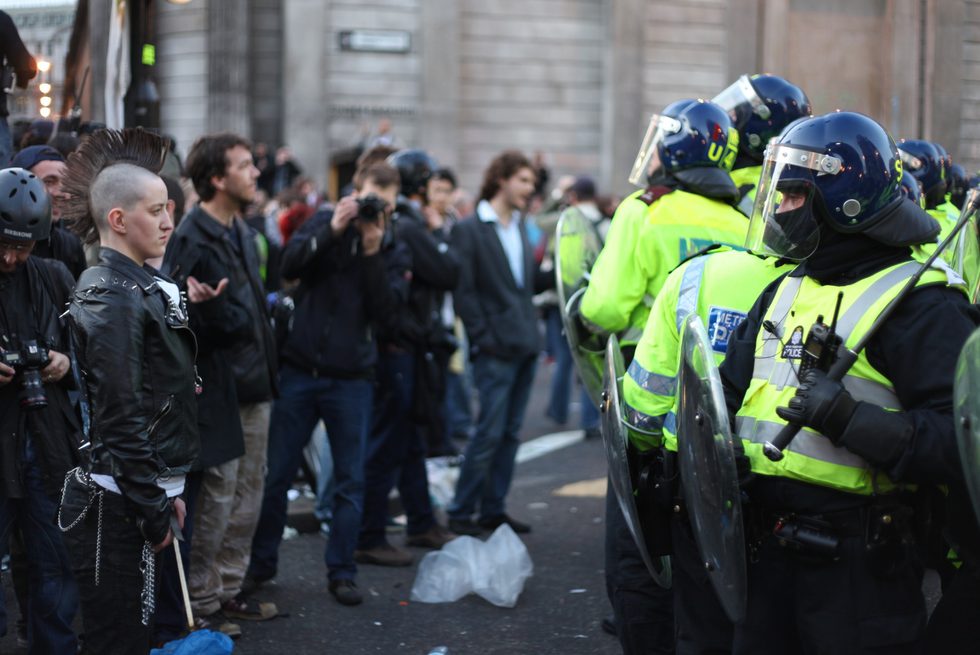Activism: Integration
From the Series: Activism
From the Series: Activism

A reflection on the concept of 'integration' from the viewpoint of research on activism, raises the question of how movements are constituted—how do they bring people together? Since 2011, streets and squares all over the world have been engulfed in protest. On 15 October 2011, nearly 1,000 actions were coordinated in at least 82 different countries in an “International Day of Rage”. This Day of Rage was just one day in what has now become years of continuous political unrest worldwide. From the Arab Spring, to the movements of the squares in Southern Europe, to Occupy movements internationally, to the free fare and anti-World Cup movements in Brazil, to the Gezi uprising in Turkey, to the recent Bosnian uprising. As I travel from one country to the next, from one occupied square to another, I go in search of what unites these struggles across the many different contexts, people and places.
Looking back over the past few years, what seems clear to me is that alongside the slogans and topics that are specific to each location, common themes emerge across vast distances. At least two of these themes can be captured in the slogans commonly found at demonstrations in Spain: “No one represents us!” and “We are not commodities in the hands of bankers and politicians!”. These two slogans also tie today's movements to the alterglobalization movement famous for their mass mobilizations against the WTO, WB/IMF and G8. Social movements today are tackling a double dilemma: on the one hand, the disempowerment we feel under systems of representative democracy and, on the other hand, the dominance of neoliberal capitalism. These two systems, the political structures of democracy and the economic relations of capitalism, have always been connected, but the close integration of economy and politics is never more clear than at a time of economic crisis, when elites scramble to maintain control over a system that results in extreme inequality and disempowerment for the majority of the world's population.
The specific mechanisms through which economic and political exclusion take place are too varied to explore here, but a reflection linked to the concept of integration cannot ignore that from a European social movement perspective, 'integration' is a key ideological tool used to enforce uniformity within national boundaries, and consequently an instrument used to exclude all those who cannot or do not want to conform. European migration policy of 'integration', in which migrants are expected to assimilate into a specific national culture and are simultaneously denied the possibility to do so through a continuous processes of othering (in which the migrants are always the outsiders, as well as their children born and raised in Europe) is at the heart of racist and oppressive policies across Europe. The creation of literal borders between people based on a notion that everyone within certain borders shares some national and political identity is a centralizing power that is counter to the principles of 'horizontal' equality that many of today's movements are struggling for.
Instead, many people within social movements internationally, from the Arab Spring to the Indignados, to Occupy to Gezi, are rejecting the idea that a functional political community is one that is united through conformity. The classical Hobbesian notion that conflict within a polity can only be resolved when differences between “men” are represented by a singular power, is challenged by these movements. Instead they claim that forced uniformity is counter to democracy and always results in exclusion. These movements develop elaborate decision-making mechanisms that allow for not only a diversity of inputs into a decision, but also for a diversity of outputs – through their own decision-making practices, they show that political systems in a globalized twenty-first century can be geared towards reinforcing difference, not forcing uniformity.
Although many of the political dynamics that characterized the alterglobalization movement are shifting now that struggles have grown more embedded in specific localities, this principle of diversity over uniformity persists in several important ways. Despite this persistence, the refusal to conform does seem harder to maintain than in the days of alterglobalization. The tactic of occupation, the large number of people involved for the first time, the economic situation in which the movements find themselves, the use of mass people's assemblies as singular decision-making bodies, all create tendencies towards centralization that risk reproducing the idea of “the people” as necessarily uniform. While the alterglobalzation movement forged a loose unity based on overlapping networks, it is not yet clear which types of unity these newer and larger movements are forging.
As revolt continues to spread around the world and the economic situation in many countries continues to deteriorate, new movement tactics will emerge. The clever strategies movements have for creating visibility described by Haugerud and the ways movements have thus far succeeded in inter-linking “broad constituencies and multiple strategic visions” as described by Juris, will surely be essential, but equally important for a radically different form of politics will be the refusal to be categorized and labeled in the process of translating ideas into action as described by Serafini. This refusal to be categorized is part of the refusal to be fixed in place in reified political groups and is an expression of the desire to be creative and innovative as the context shifts.
Perhaps one day the ideas that the stability of a political entity rests upon a forced national unity, and that the global economy requires a uniform market ideology, will come to be viewed as twentieth century notions, relegated to the pile of failed ideologies. But I fear that day might still be a long way off. In the mean time, hopefully ethnographies that explore the many alternative political and economic models that are already out there can help to spark our imaginations.